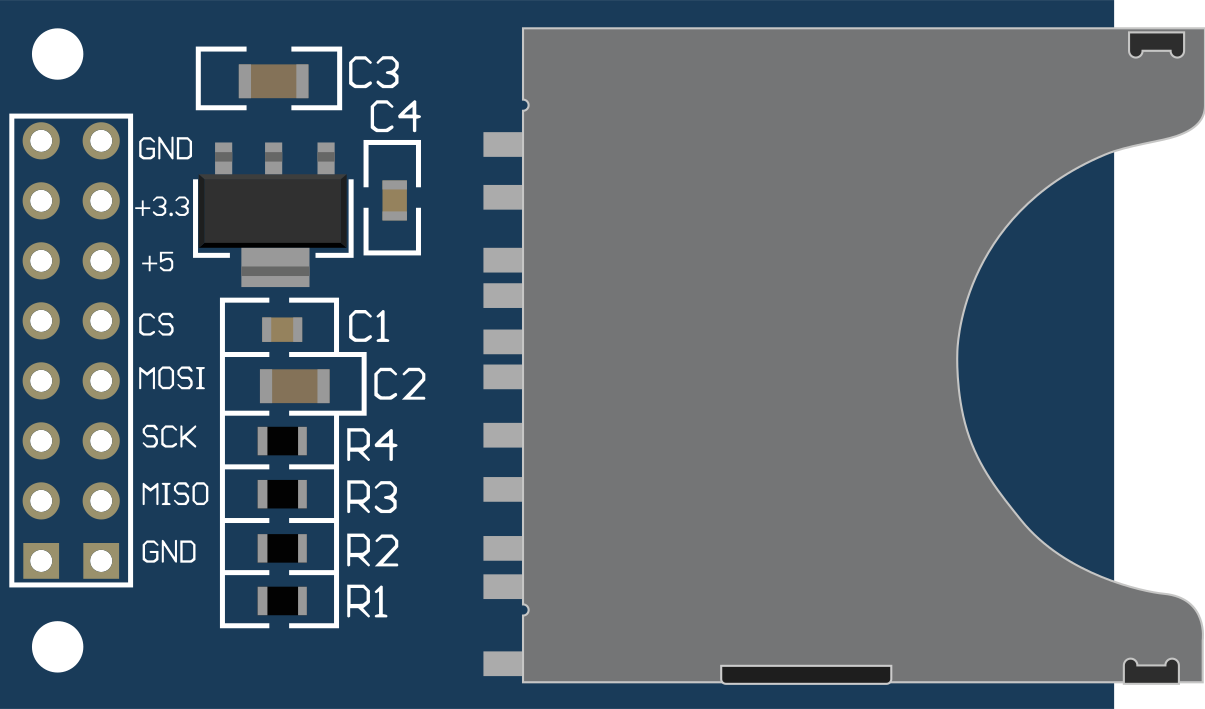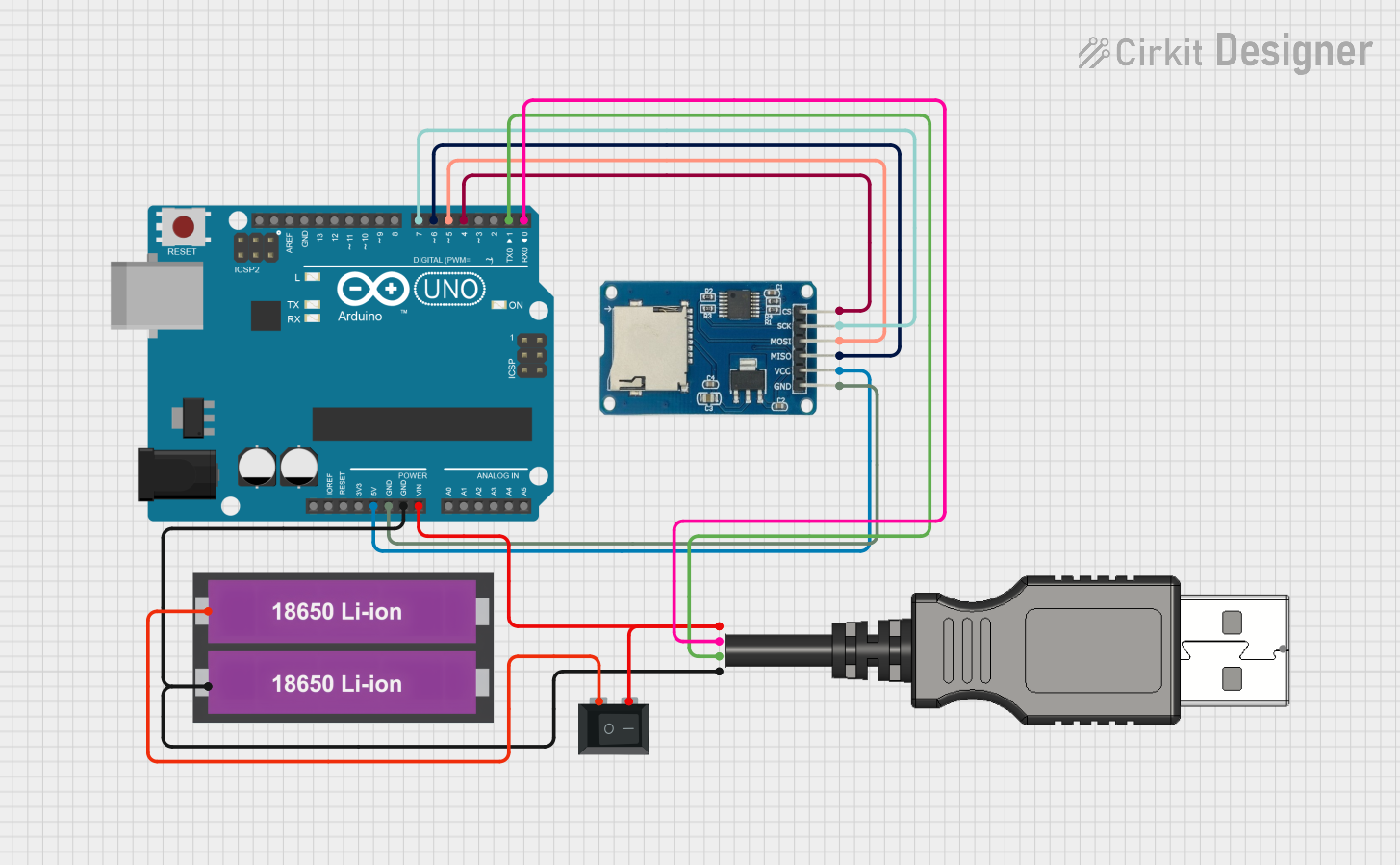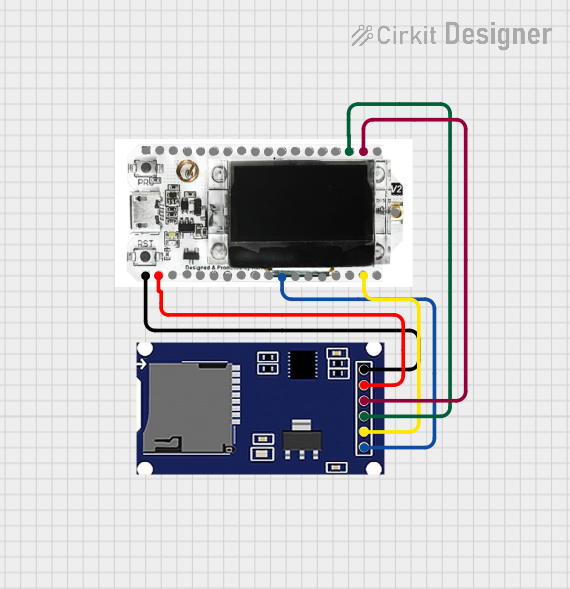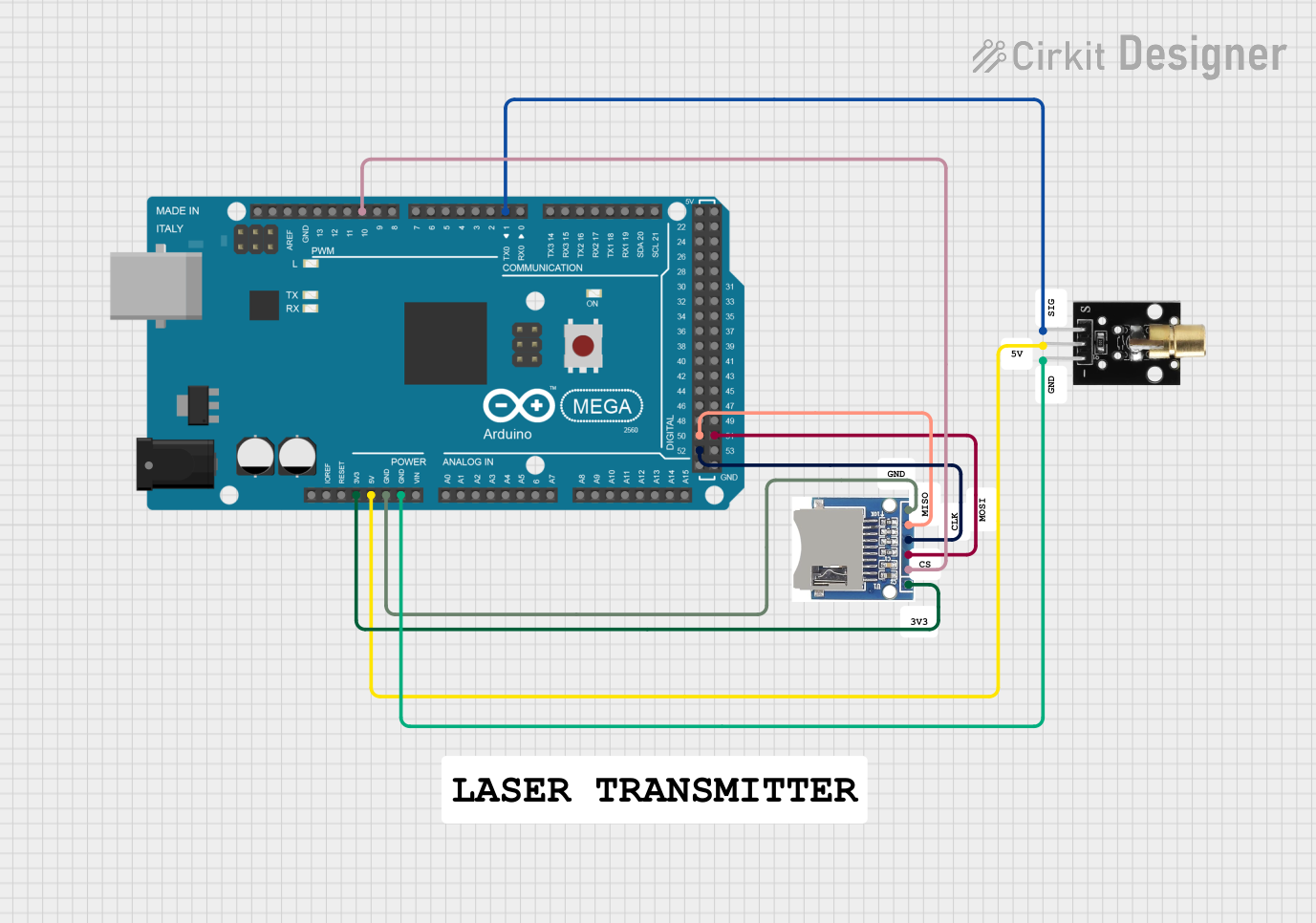
How to Use LC Studio SD Card Module: Examples, Pinouts, and Specs

 Design with LC Studio SD Card Module in Cirkit Designer
Design with LC Studio SD Card Module in Cirkit DesignerIntroduction
The LC Studio SD Card Module is an electronic component designed to facilitate easy interfacing between a microcontroller, such as an Arduino UNO, and an SD card. This module is commonly used in data logging applications, multimedia projects, and any scenario where large amounts of data need to be stored and accessed by a microcontroller.
Explore Projects Built with LC Studio SD Card Module

 Open Project in Cirkit Designer
Open Project in Cirkit Designer
 Open Project in Cirkit Designer
Open Project in Cirkit Designer
 Open Project in Cirkit Designer
Open Project in Cirkit Designer
 Open Project in Cirkit Designer
Open Project in Cirkit DesignerExplore Projects Built with LC Studio SD Card Module

 Open Project in Cirkit Designer
Open Project in Cirkit Designer
 Open Project in Cirkit Designer
Open Project in Cirkit Designer
 Open Project in Cirkit Designer
Open Project in Cirkit Designer
 Open Project in Cirkit Designer
Open Project in Cirkit DesignerCommon Applications and Use Cases
- Data logging (temperature, humidity, etc.)
- Storing configuration files
- Multimedia storage (audio, images)
- Data transfer between devices
Technical Specifications
Key Technical Details
- Operating Voltage: 3.3V to 5V (with onboard level shifter)
- Communication Interface: SPI
- Supported SD Card Types: SD, SDHC (up to 32GB)
Pin Configuration and Descriptions
| Pin Label | Description |
|---|---|
| CS | Chip Select (Active Low) |
| MOSI | Master Out Slave In |
| MISO | Master In Slave Out |
| SCK | Serial Clock |
| VCC | Supply Voltage (3.3V to 5V) |
| GND | Ground |
Usage Instructions
How to Use the Component in a Circuit
- Connect the VCC pin to the 5V output on the Arduino UNO.
- Connect the GND pin to one of the GND pins on the Arduino UNO.
- Connect the CS, MOSI, MISO, and SCK pins to the corresponding SPI pins on the Arduino UNO.
- Insert an SD card into the module's card slot.
Important Considerations and Best Practices
- Ensure that the SD card is formatted correctly, typically as FAT16 or FAT32.
- Use a level shifter if the microcontroller operates at a voltage different from the SD card.
- Keep the SPI bus lines as short as possible to reduce noise and improve reliability.
- Always power down the module before inserting or removing the SD card.
Example Code for Arduino UNO
#include <SPI.h>
#include <SD.h>
// Pin configuration
const int chipSelect = 4; // Change as per your CS pin connection
void setup() {
Serial.begin(9600);
while (!Serial) {
; // Wait for serial port to connect.
}
Serial.print("Initializing SD card...");
// On the Ethernet Shield, CS is pin 4. Set the CS pin
// to be an output and to be HIGH:
pinMode(chipSelect, OUTPUT);
if (!SD.begin(chipSelect)) {
Serial.println("Card failed, or not present");
// Don't do anything more:
return;
}
Serial.println("Card initialized.");
}
void loop() {
// Nothing here for now.
}
Troubleshooting and FAQs
Common Issues Users Might Face
- Card Initialization Failure: Ensure the card is inserted correctly, formatted, and the wiring is correct.
- Read/Write Errors: Check for loose connections and ensure the correct chip select pin is used in the code.
- Corrupted Data: Use proper power supply and avoid removing the card while operations are in progress.
Solutions and Tips for Troubleshooting
- Double-check the wiring against the pin configuration table.
- Use the
SD.hlibrary's built-in functions to check for errors and get more information. - Ensure the Arduino is communicating over SPI at a supported speed for the SD card.
FAQs
Q: Can I use this module with a 3.3V microcontroller? A: Yes, the module includes a level shifter, making it compatible with both 3.3V and 5V systems.
Q: What is the maximum size of SD card supported by this module? A: The module supports SD cards up to 32GB in size.
Q: How do I format the SD card for use with the module? A: The SD card should be formatted as FAT16 or FAT32. This can typically be done on a computer using standard disk formatting tools.